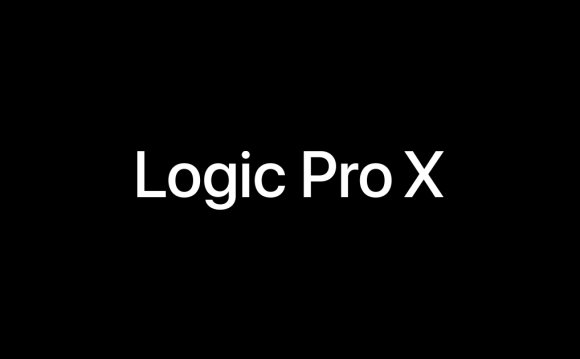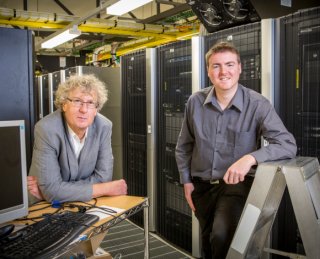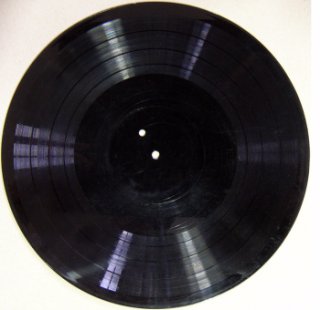
 Fig. 1: Jack Copeland and Jason Long
Fig. 1: Jack Copeland and Jason Long
Jack Copeland FRS NZ and Jason Longer compose:
An integral problem facing audio archivists is how-to establish appropriate pitch of a historical recording. Without some independent method of focusing on how the first sounded, it may be really difficult—or also impossible—to inform whether an archived recording is playing in the right pitch. An essential here's an example is the earliest known recording of computer-generated songs. In 1951, a BBC outside broadcast device in Manchester utilized a portable acetate disc cutter to fully capture three melodies played by a primeval computer system. This gigantic computer loaded much of the floor floor of Alan Turing's Computing Machine Laboratory.
Today, all of that remains of the recording session is a 12-inch single-sided acetate disc, cut by the BBC's specialist whilst the computer played. The pc itself ended up being scrapped long-ago, and so the archived recording is our just screen thereon historical soundscape. Just what a disappointment it was, consequently, to find out that the pitches were not precise: the recording offered at the best only a rough impression of how the computer system seemed. But with some electronic investigator work it proved possible to restore the recording—with the effect your true noise for this ancestral computer can be heard again, the very first time much more than half a century.
Fig. 2: the first 'acetate' disk ended up being conserved by Manchester University engineer Frank Cooper (picture courtesy of Chris Burton)
Alan Turing's pioneering work, in the belated 1940s, on transforming the pc into a guitar has mainly been overlooked: it is a metropolitan myth for the songs world that first computer-generated music notes were heard in 1957, at Bell Labs in the usa. The current Oxford Handbook of Computer musical staked out a counterclaim, saying that 1st computer system to try out notes had been located in Sydney, Australia. But the Sydney computer had not been working until the end of 1950, whereas computer-generated notes were rising from a loudspeaker in Turing's processing laboratory since the autumn of 1948.
 The Manchester computer system had an unique instruction that caused the loudspeaker—Turing called it the 'hooter'—to produce a brief pulse of sound, enduring a little small fraction of a second. Turing stated this seemed like 'something between a tap, a click, and a thump'. Executing the training again and again lead to this 'click' being produced over and over, on every 4th tick associated with computer's interior time clock: tick-tick tick mouse click, tick tick tick click. Repeating the instruction adequate times like this caused the man ear to hear maybe not discrete presses but a reliable note, actually the note C6, two octaves above center C.
The Manchester computer system had an unique instruction that caused the loudspeaker—Turing called it the 'hooter'—to produce a brief pulse of sound, enduring a little small fraction of a second. Turing stated this seemed like 'something between a tap, a click, and a thump'. Executing the training again and again lead to this 'click' being produced over and over, on every 4th tick associated with computer's interior time clock: tick-tick tick mouse click, tick tick tick click. Repeating the instruction adequate times like this caused the man ear to hear maybe not discrete presses but a reliable note, actually the note C6, two octaves above center C.
Turing recognized that when the 'hoot' instruction had been duplicated not merely repeatedly, but in various habits, then your ear would hear various music notes: like, the duplicated structure tick tick tick click, tick tick tick-tick, tick-tick tick mouse click, tick tick tick tick produced the note of C5 (an octave above center C), while saying the different structure tick-tick tick mouse click, tick tick tick simply click, tick-tick tick-tick, tick tick tick mouse click, tick tick tick mouse click, tick tick tick tick produced the note of F4, four notes above preceding middle C—and etc. It had been a delightful discovery.
Turing had not been really contemplating programming the computer to try out traditional items of songs: he used different notes to point the thing that was taking place within the computer—one note for 'job finished', other individuals for 'digits overflowing in memory', 'error when transferring information from the magnetic drum', an such like. Running certainly one of Turing's programs must-have already been a noisy business, with different musical notes and rhythms of ticks enabling an individual to 'listen in' (while he place it) from what the computer was doing. He left it to somebody else, though, to plan the very first full little bit of songs.
A schoolteacher known as Christopher Strachey bought a copy of Turing's code writers' Handbook for Manchester Electronic Computer Mark II (the Mark II computer had replaced the model Mark we, which played records, early in 1951). This was actually the world’s very first computer programming manual. Strachey, a talented pianist, studied the Handbook and appreciated the potential of Turing's terse directions about how to program musical records. Shortly to be one of Britain's top computer scientists, Strachey resulted in at Turing's Manchester laboratory with what was at the full time the longest computer program ever before to be attempted. Turing understood the precocious Strachey good enough to let him utilize the computer system for per night. 'Turing arrived in and provided me with a normal high-speed, high-pitched information of how to use the machine', Strachey recounted; and then Turing departed, making him alone within computer's console before after early morning.
Fig. 3: Christopher Strachey sunbathing within the garden of their cottage 'The Mud home' in 1973, two years before their untimely demise. (Photo courtesy of the Bodleian Library and Camphill Village Trust)
'we sat facing this enormous device', Strachey said, 'with four to five rows of twenty switches and things, in a-room that thought just like the control room of a battle-ship.' It was the initial of an eternity of all-night development sessions. Each morning, to onlookers' astonishment the computer raucously hooted from National Anthem. Turing, their typical monosyllabic self, said enthusiastically 'Good tv show'. Strachey could not have thought of an easy method to obtain interest: a few weeks later on he obtained a letter supplying him employment within processing laboratory.
The BBC recording, made some time later exactly the same 12 months, included not just the nationwide Anthem but also an endearing, if rather brash, rendition of this nursery rhyme Baa Baa Ebony Sheep also a reedy and wooden performance of Glenn Miller’s famous hit-in the Mood. You will find unsettled questions regarding the authorship regarding the three routines that played these taped melodies. When you look at the aftermath of Strachey's trip de force many people in lab began composing music programs: perhaps the routine that played the National Anthem in recording was a retouched version of Strachey's initial.









